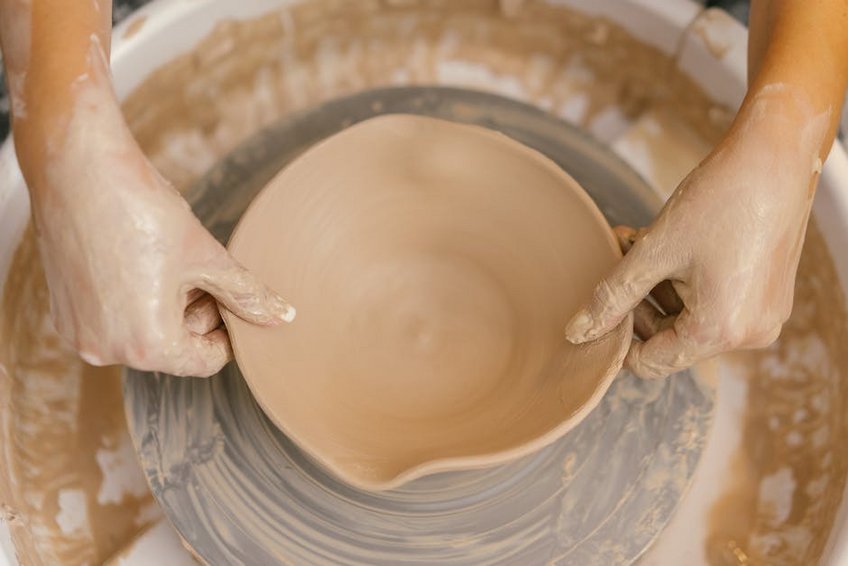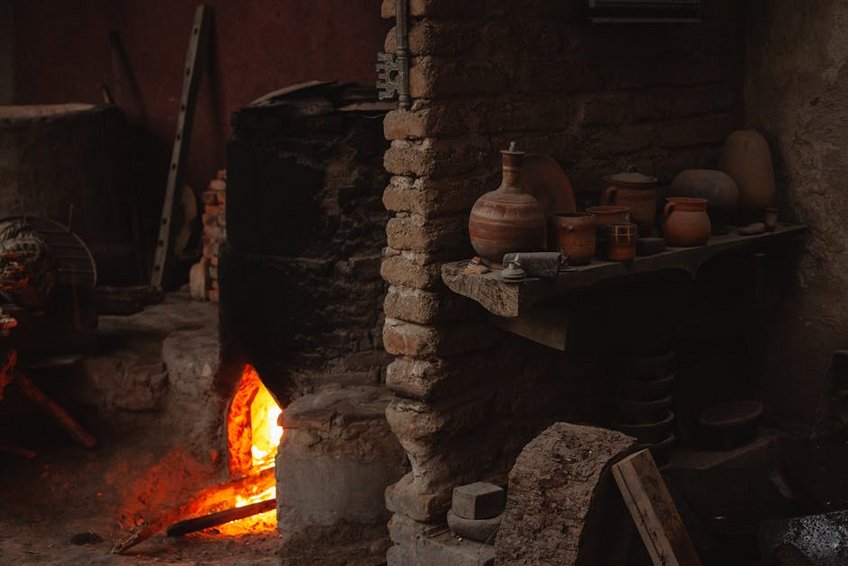Traditional Pottery Workshop: A Hands-On Cultural Experience for Travelers
Imagine sitting at a pottery wheel, your hands covered in cool, wet clay, as a master potter guides you through centuries-old techniques. A traditional pottery workshop offers more than just a craft lesson; it’s a deep dive into local culture and history that connects you with artisans whose skills have been passed down through generations. Whether you’re in a rustic village in Turkey or a modern studio in Japan, participating in a traditional pottery workshop allows you to create something tangible while learning about regional traditions. This immersive experience combines creativity with travel, giving you a unique souvenir and unforgettable memories. As you plan your next trip, consider adding a traditional pottery workshop to your itinerary for an authentic cultural encounter that goes beyond typical tourist activities. You’ll discover that shaping clay isn’t just about making pottery; it’s about understanding a community’s heritage and expressing your own creativity in a new environment. Many travelers find that a traditional pottery workshop becomes the highlight of their journey, offering a peaceful break from sightseeing and a chance to engage with local culture on a deeper level.
Traditional Pottery Workshop – Essential Information
Before you book your spot, it’s important to understand what a traditional pottery workshop entails. Unlike modern pottery classes that might focus on contemporary techniques, traditional workshops emphasize historical methods, often using tools and materials specific to the region. You’ll typically work with natural clay sourced locally, and learn techniques like coil building, slab construction, or wheel throwing that have been used for centuries. These workshops are usually led by experienced artisans who have mastered their craft over decades, and they often share stories about the cultural significance of pottery in their community. The duration can vary from a few hours to several days, depending on the complexity of the project. Most workshops provide all necessary materials, including clay, tools, and aprons, but it’s always good to check beforehand. Participants usually get to keep their creations, which are fired and glazed, though shipping arrangements might be needed if you’re traveling. Understanding these basics will help you choose the right traditional pottery workshop for your skill level and interests.
What is a Traditional Pottery Workshop? – Key Elements
- Hands-on instruction in historical techniques like wheel throwing or hand-building methods specific to the local culture.
- Use of traditional tools and locally sourced materials, such as natural clay and wood-fired kilns, to maintain authenticity.
- Cultural context provided by master artisans, including stories about the pottery’s role in daily life and ceremonies.
- Budget-friendly options (under $50): Group workshops in destinations like Mexico or Thailand, often including materials and a simple piece to take home; ideal for beginners.
- Mid-range experiences ($50-$150): Longer sessions in places like Italy or Turkey, with more personalized instruction and opportunities to create multiple pieces; may include refreshments.
- Luxury workshops ($150-$500+): Private lessons with master potters, often in exclusive settings like Japanese ryokans or Turkish caves, including premium materials, meals, and shipping of finished works.
- UNESCO Intangible Cultural Heritage – For information on traditional pottery techniques recognized globally.
- Lonely Planet Travel Guides – For destination details and workshop recommendations.
History and Cultural Significance – Why It Matters
Pottery is one of humanity’s oldest crafts, dating back thousands of years, and each region has developed unique styles influenced by local resources and traditions. In a traditional pottery workshop, you’re not just learning a skill; you’re participating in a living history. For example, in places like Çanakkale, Turkey, pottery has been a vital part of the economy and culture since ancient times, with techniques preserved through families. Similarly, Japanese pottery workshops often incorporate Zen principles, reflecting the country’s aesthetic values. Understanding this background enriches your experience, as you appreciate how pottery shapes cultural identity. Many workshops are held in historical settings, such as old kiln sites or family-owned studios, adding to the authentic atmosphere. This connection to the past makes a traditional pottery workshop a meaningful activity for travelers seeking deeper cultural immersion.
Traditional Pottery Workshop – Planning Your Trip
Planning a trip around a traditional pottery workshop requires some forethought to ensure you get the most out of the experience. Start by researching destinations known for their pottery heritage, such as Turkey’s Cappadocia region, Italy’s Amalfi Coast, or Japan’s Bizen area, each offering distinct styles. Consider the time of year, as weather can affect both travel and the pottery process; for instance, clay dries differently in humid versus dry climates. Budget is another key factor; workshops can range from affordable group sessions to private masterclasses costing hundreds of dollars. It’s also wise to book in advance, especially during peak travel seasons, as popular workshops fill up quickly. When planning, think about the length of the workshop and how it fits into your itinerary—a half-day session might be perfect for a short visit, while a multi-day workshop could be the centerpiece of a longer trip. Don’t forget to check visa requirements if traveling internationally, and ensure you have travel insurance that covers activity-based excursions.
Best Time to Visit for a Traditional Pottery Workshop
The ideal time for a traditional pottery workshop depends on the destination and your preferences. In Mediterranean regions like Turkey or Greece, spring (April to June) and autumn (September to October) offer mild weather, avoiding the summer crowds and extreme heat that can make clay work uncomfortable. For indoor workshops, any time of year works, but consider local festivals; for example, attending a workshop during Japan’s pottery fairs in spring adds cultural depth. Winter can be a good option for fewer tourists, but check if studios are open. If you’re sensitive to humidity, avoid rainy seasons, as high moisture affects clay drying. Ultimately, align your visit with seasons that enhance the overall travel experience, ensuring comfortable conditions for both the workshop and exploration.
Budget Planning and Costs for Your Workshop Experience
Essential Preparation Checklist Before You Go
To make your traditional pottery workshop smooth and enjoyable, prepare a few essentials. Pack comfortable clothing that you don’t mind getting dirty, as clay can be messy; avoid loose sleeves that might interfere with the wheel. Bring a water bottle and snacks if not provided, especially for longer sessions. Research basic pottery terms beforehand to better understand instructions, and if you have specific ideas for projects, sketch them out. Confirm booking details, including location, duration, and what’s included—some workshops offer firing and glazing, while others might charge extra. Lastly, have a plan for your finished pottery; if you’re flying, inquire about shipping options to avoid baggage issues. This preparation ensures you focus on the creative process without distractions.

Traditional Pottery Workshop – Top Destinations and Experiences
Around the world, certain destinations stand out for their rich pottery traditions, offering workshops that cater to all skill levels. In Turkey, the Cappadocia region is famous for its ancient pottery techniques, with workshops held in cave studios where you can create pieces inspired by local motifs. Japan’s Bizen and Mashiko towns provide serene settings for learning about Zen-inspired pottery, often involving wood-firing methods that date back centuries. Italy’s Amalfi Coast boasts colorful ceramic workshops where you can paint traditional designs in vibrant coastal villages. For something unique, Oaxaca, Mexico, offers workshops blending indigenous techniques with modern artistry. Each destination provides not just a lesson, but a cultural immersion, with opportunities to visit local markets or kiln sites. When choosing a location, consider the style of pottery—whether it’s the earthy tones of Turkish çini or the delicate porcelain of Germany—and how it aligns with your interests. These top spots ensure a memorable traditional pottery workshop that enhances your travel experience.
Must-Visit Pottery Hubs for Enthusiasts
If you’re serious about pottery, certain hubs are unmissable. Çanakkale in Turkey is a prime example, home to ancient Trojan pottery traditions and workshops where you can throw clay using methods thousands of years old. In Japan, the town of Bizen is renowned for its unglazed, rustic pottery fired in pine wood kilns, offering workshops that emphasize patience and simplicity. Italy’s Deruta is another hotspot, famous for its majolica ceramics; here, workshops often include painting intricate patterns inspired by Renaissance art. These hubs not only provide high-quality instruction but also a chance to engage with communities where pottery is a way of life. Visiting these places allows you to see masterpieces in local museums and even purchase authentic works, deepening your appreciation for the craft.
Hidden Gems and Local Favorites for Authentic Experiences
Beyond the well-known destinations, hidden gems offer more intimate traditional pottery workshop experiences. In Portugal, the village of São Pedro do Corval hosts small family-run studios where you can learn about traditional Alentejo pottery away from crowds. Greece’s Sifnos Island has低调 workshops focusing on utilitarian pottery made with local clay. In the US, North Carolina’s Seagrove area features numerous studios preserving Southern folk traditions. These spots often provide a more personalized touch, with artisans sharing stories over homemade meals. Seeking out these lesser-known locations supports local economies and offers a quieter, more authentic encounter with pottery culture, perfect for travelers looking to escape tourist trails.
Traditional Pottery Workshop – Practical Travel Information
When traveling for a traditional pottery workshop, practical details can make or break your experience. Transportation is key; many workshops are in rural areas, so renting a car or using local transit might be necessary. For international trips, check visa requirements—US and EU passport holders often get visa-free access to popular pottery destinations like Turkey for short stays, but always verify current regulations. Accommodation options range from budget hostels to boutique hotels near studios; booking something within walking distance can save time. Currency-wise, have local cash on hand for small purchases, though most workshops accept credit cards. Health and safety are important; clay work is generally safe, but if you have allergies to dust or materials, inform the instructor. Also, consider travel insurance that covers activity-related incidents. By addressing these logistical aspects, you can focus entirely on enjoying your traditional pottery workshop.
| Accommodation Type | Features and Proximity to Workshops | Price Range per Night (USD) |
|---|---|---|
| Budget Guesthouses | Basic amenities, often family-run, within 1-2 km of studios | $20-$50 |
| Mid-Range Hotels | Comfortable rooms, sometimes with pottery-themed decor, close to urban workshops | $50-$150 |
| Luxury Retreats | Includes workshop packages, gourmet meals, and scenic views in rural settings | $150-$400+ |


